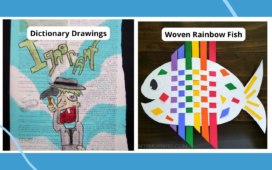From the first moment students walk into your classroom, you want them to feel welcome and safe. One important way to do that is by establishing your rules, procedures, and expectations up front. We’ve partnered with our friends at Avanti by Solution Tree to bring you top tips and ideas for creating, sharing, and enforcing meaningful rules, as well as setting high expectations from day one.
Creating and Sharing Classroom Rules
Even the most laid-back teacher needs some rules to make their classroom a safe and enjoyable learning space for all. But how do you determine exactly what rules make sense for your situation? Here are some tips and ideas for writing and sharing classroom rules worth keeping and enforcing.
1. Be clear and specific
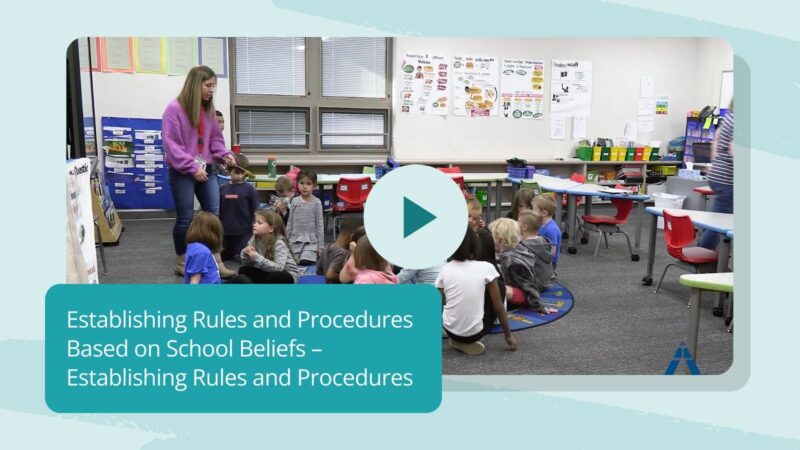
Here’s a tip from Avanti: Don’t assume your students already know the general classroom rules and expectations, even high schoolers. Instead, give them clear and specific rules you expect them to follow, and help them understand what it looks like to follow those rules. Encourage buy-in by involving them in a discussion about the value of the rules, too, emphasizing words like responsibility, rights, freedom, and equality.
Watch Avanti’s Video: Establishing Rules and Procedures Based on School Beliefs
2. Keep it simple
Your school likely already has a handbook full of detailed rules for students, so there’s no need to reinvent the wheel here. Instead, choose a handful of rules that you feel are most important to keep students safe, protect classroom resources, and create a welcoming learning environment.
Learn more: What Makes for Good Classroom Rules? Real Teachers Weigh In
3. Write the rules with your students

Here’s a popular idea from Avanti: Let your students help you write the classroom rules as a first-day-of-school activity. Through a guided exercise, students work together to brainstorm their ideas of a good classroom environment. Then, they narrow them down and vote to establish their class’s “standard operating procedures.”
Learn more: 38 Must-Teach Classroom Rules
4. Start with respect
Ultimately, all rules are about respect. That means your rules might be as simple as “Respect Me. Respect the Classroom. Respect Yourself.” If you go this route, be sure to spend some time on your first day discussing what respect looks like and why it matters so much.
Classroom Activity: Start by asking students to write a short journal entry about a time they felt disrespected and how that made them feel. Then, break them into small groups and ask them to brainstorm examples of respect and disrespect in the classroom. Share these with the entire group, and discuss them together. Finally, ask each student to write their own definition of the word “respect” on a sticky note, and post it on an anchor chart to hang on your wall.
5. Try the 5 Ps

This idea came from an educator in the We Are Teachers HELPLINE group. The 5 Ps stand for: Positive, Polite, Prepared, Productive, and Prompt. They’re easy to remember, and they all fit within the larger category of respect too. Talk about the meaning of each word, and give some examples of what fits and doesn’t fit into each P.
Classroom Activity: Post five charts around the room, one for each of the five Ps. Have students work in groups to rotate around the room and write examples of each word. Then, ask them to use a sticky note to write which rule means the most to them and their reason why. Stick them to or around the appropriate chart, and read off a few for each one.
6. Role-play rules with students
Try this first-day-of-school activity idea from Avanti to make your rules easier for students to understand. Break students into small groups, and assign each one a rule from your list. Ask them to create two short skits: one that shows what it looks like to follow the rule, and one that shows what it looks like to break it. (Kids love this one!)
Enforcing Classroom Rules
Setting and sharing rules is just the first step. Now you’ve got to make sure students actually follow these rules. Explore these ideas for keeping classroom behavior on track throughout the year.
7. Don’t set rules you don’t want to enforce

Sometimes we make rules just because, well, they’ve always been the rules. Ultimately, though, these rules may not be beneficial, and trying to enforce them is a waste of time and energy. For example, insisting students raise their hand if they want to speak can stifle class discussion. And fussing over a strict dress code takes up time that could be spent learning instead.
Learn more: 4 Classroom Rules I Always Forget To Enforce
8. Provide cues when rules are bent or broken
Students don’t always break the rules on purpose. Sometimes they forget or just get carried away in the moment. It’s especially hard for them to follow rules that are new to them, meaning younger students are more likely to need frequent reminders rather than immediate punishments. Try using verbal and nonverbal cues to draw students’ attention to infractions. Solution Tree has lots of great practical and useful ways to rein in behavior before it gets out of control.
Learn more: Free Classroom Management and Behavior resources from Solution Tree
9. Establish meaningful consequences
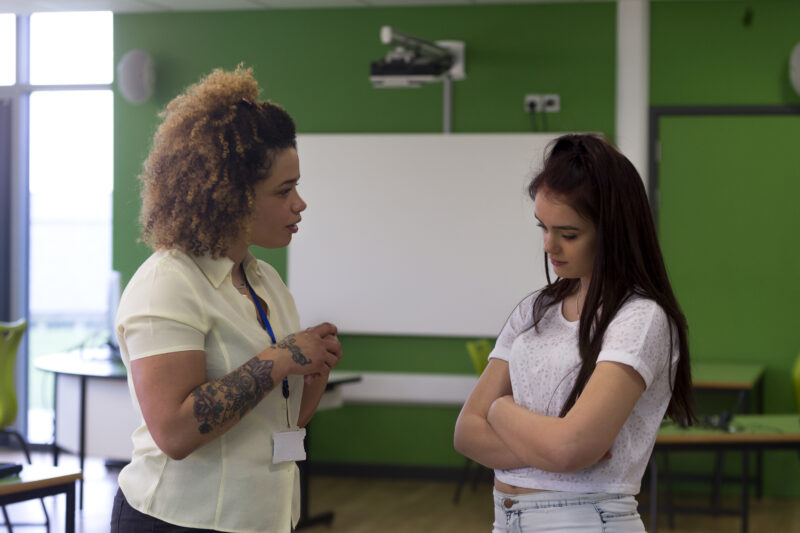
Rules without consequences are just empty words. Be clear about how you’ll enforce your rules, and what the consequences will be for breaking them. Try to ensure your consequences are meaningful, rather than just writing demerits or keeping a kid in from recess. Instead, consider what might actually cause them to rethink their behavior in the future. For instance, if someone breaks your rule about chewing gum in class, have them shadow the janitor for an hour to experience the challenges of cleaning up gum and other trash.
Learn more: 30 Logical Consequences for Student Behavior
10. Be consistent in enforcing rules
Once you’ve established simple meaningful rules, enforcing them is important. For one, it shows that you truly believe in the rules. Plus, enforcing your rules consistently means you don’t risk showing some students preferential treatment. Hold students accountable for their behavior, and you might even find that they start holding one another accountable too.
Learn more: 10 Ways To Discipline Students Without Taking Away Recess
11. Check in and review rules from time to time
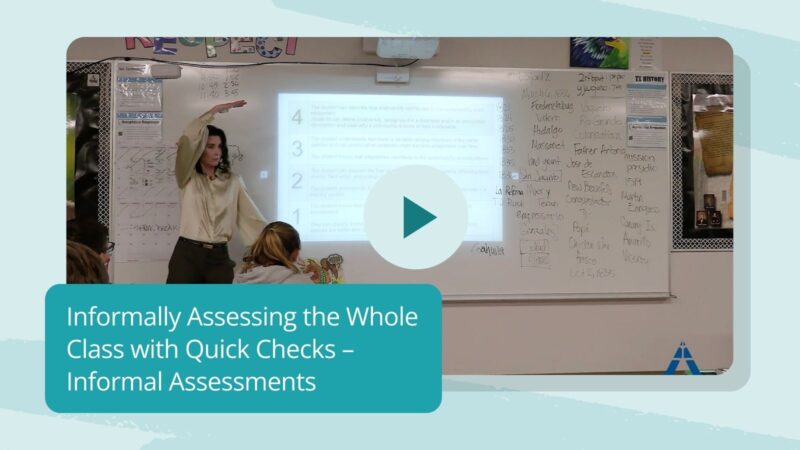
Teachers are already pros at using formative assessments to check in with students throughout a lesson, making modifications on the fly to improve the learning experience. You can do the same with your classroom rules and procedures! When you return from an extended break, give a quick Kahoot quiz to review the rules as a refresher. Use an exit ticket to ask kids to list a classroom rule or procedure they feel isn’t working, and make suggestions for improvements. Make your rules and procedures a living document, altering them as needed to keep your students safe and focused on the learning process.
Watch Avanti’s Video: Informally Assessing the Whole Class With Quick Checks
Setting High Expectations
Expectations are broader than rules, and they set an overall tone for your classroom. They’re often just understood rather than communicated directly. Learn how to set high expectations for your classroom with these tip and ideas.
12. Aim high
People tend to live up to the beliefs we hold about them, rather than the expectations we declare. Here’s a fascinating insight to consider: A Harvard study revealed that having a boss who respects and believes in you can actually improve your job performance. This idea extends to the classroom as well. When teachers and students have confidence in each other, it can lead to better outcomes for everyone involved.
Learn more: The Harvard Trick That Has Transformed My Classroom Management
13. Be equitable
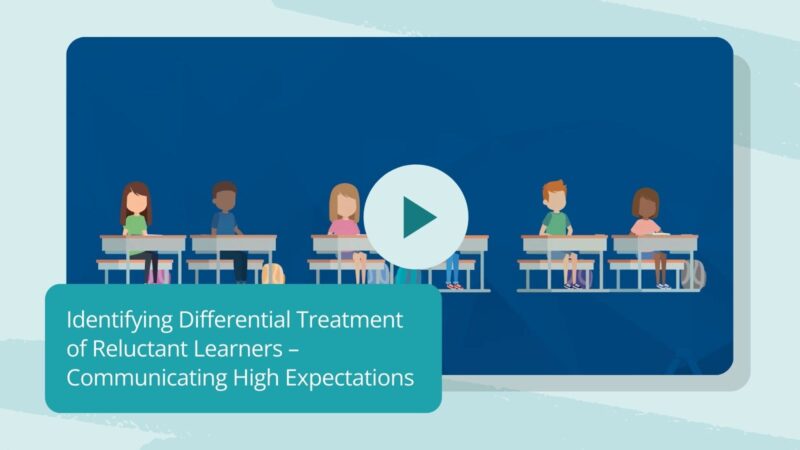
We already mentioned how important it is to be consistent in enforcing classroom rules, to ensure you’re fair and equitable to all students. But it can be hard to recognize when we’re treating some students differently than others. Teachers need to take a close look at the expectations they hold and reinforce in their interactions with students. Use Avanti’s self-assessment activity, and you might be surprised what you learn about your own behavior with students.
Watch Avanti’s Video: Identifying Differential Treatment of Reluctant Learners
14. Encourage a growth mindset
Let students know right off the bat that it’s absolutely OK to make mistakes in your classroom. Mistakes are an incredibly important part of the learning process, and embracing them is key to a growth mindset. Encourage your students to try and fail, participate even when they’re not sure of the answer, and accept feedback to learn from the mistakes they do make.
Learn more: Growth Mindset: A Practical Guide for Teachers
15. Emphasize self-care

Research shows that kids these days experience more stress, anxiety, and other mental health issues than ever before. Unreasonable expectations for academic performance may contribute to these challenges. That’s why more schools and teachers are taking time to ensure students know how to practice self-care, including getting enough rest and prioritizing their own well-being. Make sure your own classroom expectations balance academic performance with mental health.
Watch Avanti’s Video: Scheduling Intentional Breaks at School
16. Expect participation
Learning is best when it’s an active process. Passively listening to a lecture isn’t nearly as effective or meaningful as participating in a discussion or trying something hands-on. Let students know you want to hear from each and every one of them, and find ways to ensure they’re all comfortable participating at some level. That being said, grading participation may not necessarily be the way to go, so weigh your options carefully.
Learn more: Should We Grade Participation?
17. Be inclusive
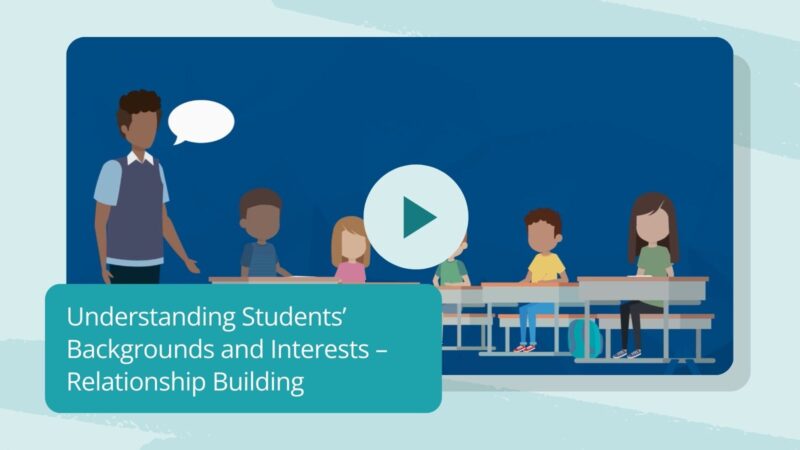
The word “inclusive” can mean many things to many people, but it all comes down to ensuring your classroom welcomes, respects, and supports learning for every single student. It doesn’t always take overt actions to alienate marginalized students; it can be as simple as poor word choice or the inability to see themselves reflected in your learning materials. Expect students to foster a sense of inclusivity in your classroom, and start by doing so yourself.
Watch Avanti’s Video: Understanding Students’ Backgrounds and Interests
18. Model good behavior
Be the person you expect your students to be, and try not to ask something of them that you wouldn’t do yourself. If you do need to make an exception to a rule (say, using your phone in class), acknowledge and explain your actions. Respect is a two-way street, and “because I’m the teacher” is never a good answer when you’re trying to build relationships.
19. Recognize success
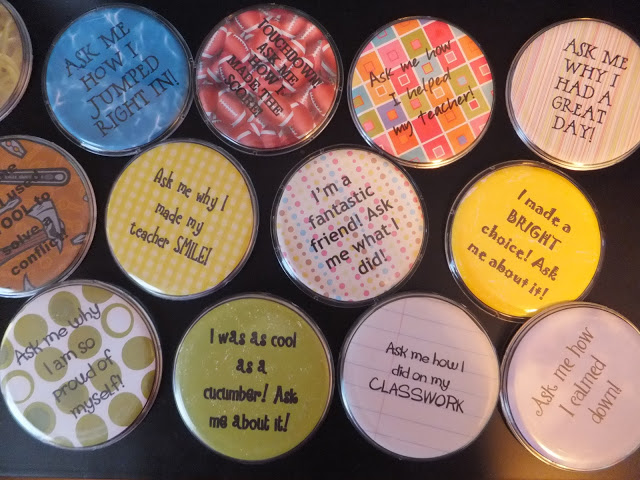
We’re always quick to point out rule infractions, but why not recognize when students are following them perfectly too? You might say, “I really appreciate that everyone came to class completely prepared today,” or “Thank you so much for listening quietly during that presentation.” Sure, these might just be things they should be doing anyway, but a few words of appreciation and positive reinforcement can go a long way.
Learn more: Ways To Encourage Good Behavior, Without the Junky Prizes or Candy
20. Keep your eye out for new ideas
Building a classroom culture you and your students love spending time in is an ongoing process. Keeping high expectations for your students is tough, but help is available! Definitely head over to Avanti by Solution Tree. With over 700 quick strategy-based videos on every topic teachers need, you’ll have all the great ideas you need. There’s always something new being added, and there’s a great community of educators to connect with. It’s a perfect way to keep learning new ways to improve as educators in a time and manner that respects everything teachers already do for their students.





